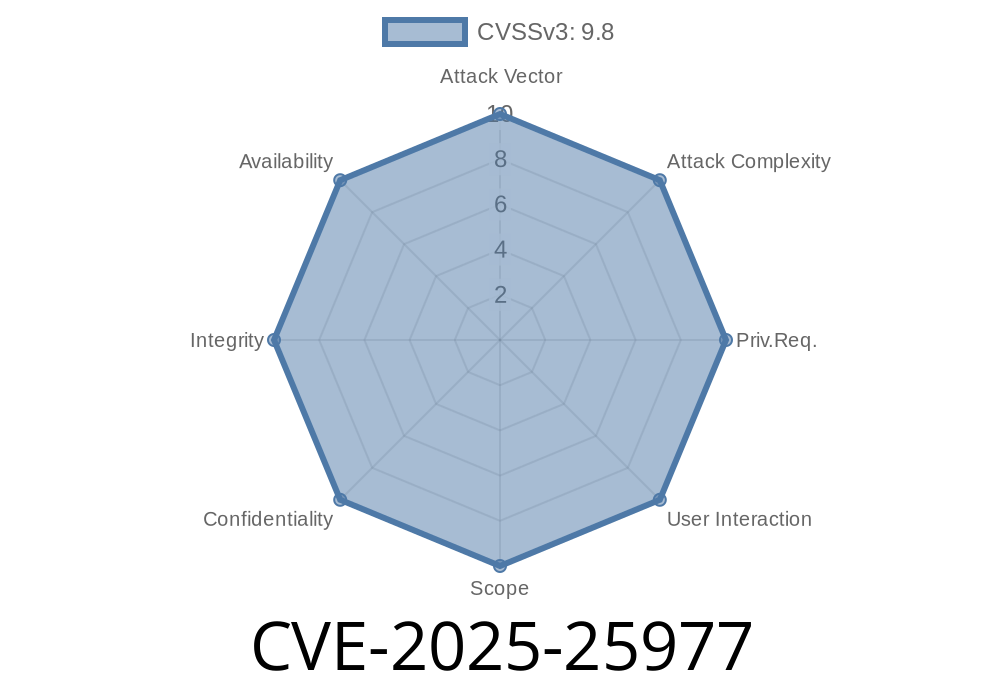A critical security vulnerability (CVE-2025-25977) has been identified in Canvg version 4..2, a popular JavaScript SVG processing library. This vulnerability allows an attacker to execute arbitrary code through the constructor of the StyleElement class. This post aims to provide a detailed explanation of the vulnerability and the exploit, relevant code snippets, and links to original references.
Vulnerability Description
The Canvg library is widely used for rendering Scalable Vector Graphics (SVG) in web applications. It provides a seamless way for developers to include complex visual elements and animations in their projects.
The vulnerability exists within the constructor of the StyleElement class. Incorrectly handling the input data may lead to untrusted JavaScript code execution. An attacker can exploit this flaw to launch a remote code execution (RCE) attack, which can severely impact the security and integrity of the application.
Details of the Exploit
The exploit involves injecting malicious input data into an SVG file and uploading it to the vulnerable web application. This code snippet demonstrates an SVG example that shows how an attacker could take advantage of this vulnerability:
<svg>
<style onload="alert('CVE-2025-25977 Exploited!')">
/* Vulnerable CSS code here */
</style>
</svg>
In this example, the attacker inserts a JavaScript code snippet into the "onload" attribute of the "style" element. This code snippet will execute when the Canvg library parses the SVG file, causing the browser to display an alert with the message "CVE-2025-25977 Exploited!".
Here is the vulnerable portion of the Canvg source code
class StyleElement {
constructor() {
// Vulnerable code here
var elementHandler = (function() {
var eventContext = new SvgEventContext(elem);
eventContext.styleHandler = styleHandler;
currentElement = eventContext;
elementHandler[eventContext.type]();
}
}
}
The constructor accepts an SVG file, and the elementHandler processes the input. Due to the unsafe handling of the input data, an attacker can inject JavaScript code into the SVG file, leading to RCE.
Impact and Severity of the Vulnerability
The impact of this vulnerability is severe, as a successful exploit can lead to RCE, compromising the security and integrity of the vulnerable application. Cyber attackers may leverage RCE for stealing sensitive data, defacing websites, or even launching additional attacks against other systems.
Remediation
To mitigate this vulnerability, developers should immediately update Canvg to the latest version and thoroughly validate and sanitize SVG files before incorporating them into their applications. It's crucial to keep abreast of any new security vulnerabilities in widely used JavaScript libraries.
For more information about this vulnerability and the Canvg library, consult the following resources
1. Canvg Github Repository
2. CVE-2025-25977 - National Vulnerability Database
3. OWASP – Unrestricted File Upload
In conclusion, the CVE-2025-25977 vulnerability in Canvg v4..2 can lead to arbitrary code execution through the constructor of the StyleElement class. It is vital for developers to stay aware of such security risks and update their dependencies promptly. Users should always use trusted sources to obtain SVG files and be cautious when uploading or processing SVG files in their applications.
Timeline
Published on: 03/10/2025 16:15:13 UTC
Last modified on: 03/12/2025 19:15:40 UTC
